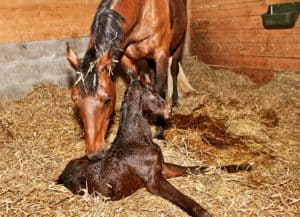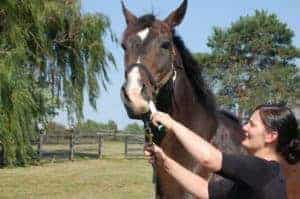Foals Don’t Learn to Pace From Their Dams
- Topics: Breeding and Reproduction, Breeding Basics, Genetics

“Although there is a traditional belief that foals learn the gait from their mothers in Hokkaido Native Horses, the mother’s gait did not affect the choice of gait of the foals in our study,” said Tomoko Amano, PhD, of the Laboratory of Animal Genetics at Rakuno Gakuen University College of Agriculture, Food, and Environment Sciences Department of Sustainable Agriculture, in Hokkaido, Japan. “We now speculate that several other genes which have less effect than the DMRT3 work with the DMRT3 on the pacing trait.”
The Hokkaido horse is a four-gaited breed native to Japan’s Hokkaido region. People traditionally used them to transport goods over mountainous regions inaccessible by wheeled vehicles. They preferred the pace to the trot because the gait is smoother, resulting in less damage to transported goods, Amano said. Today, Hokkaido horses are mostly used for local sporting competitions such as mounted archery.
In their recent study, Amano and colleagues analyzed 130 Hokkaido horses’ gaits and ran genomic tests to investigate chromosomal regions that might be related to pacing
Create a free account with TheHorse.com to view this content.
TheHorse.com is home to thousands of free articles about horse health care. In order to access some of our exclusive free content, you must be signed into TheHorse.com.
Start your free account today!
Already have an account?
and continue reading.

Written by:
Christa Lesté-Lasserre, MA
Related Articles
Stay on top of the most recent Horse Health news with












